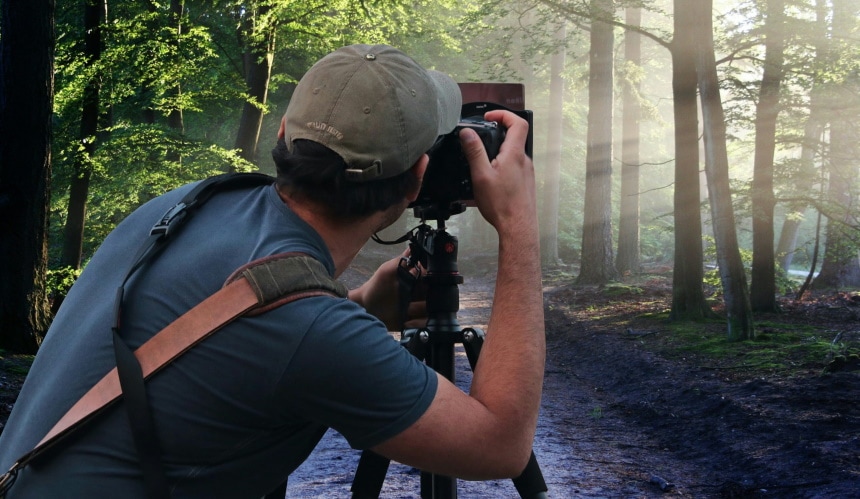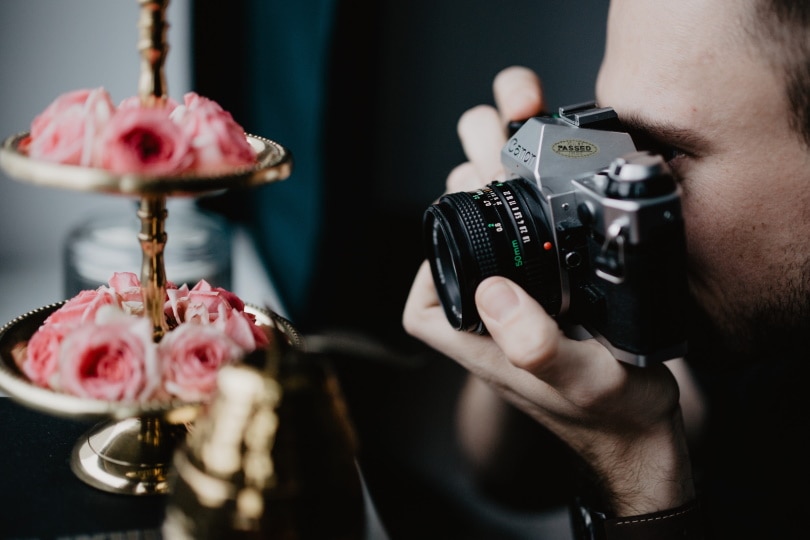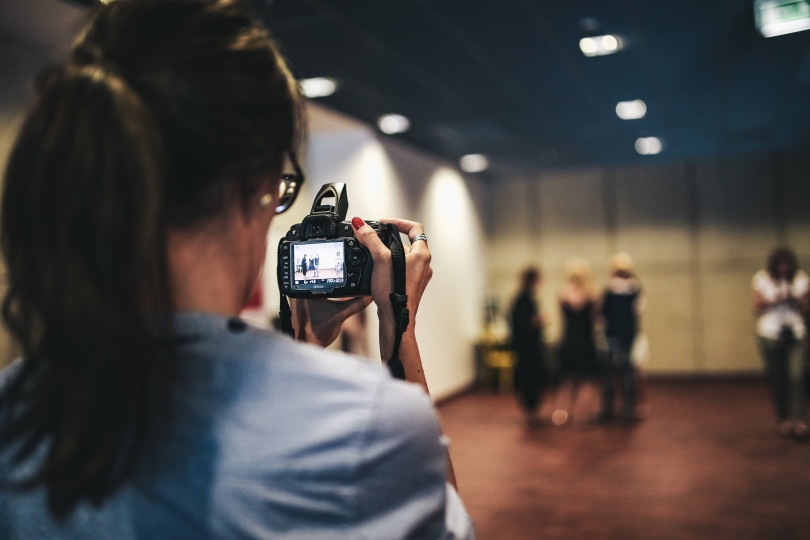What Is Depth of Field? Photography Basics Explained
Last Updated on

Depth of field, or DoF, is the distance between the closest object that appears sharp and the farthest object that appears sharp within an image. In other words, it’s the area of the photograph that is in acceptable focus. If this distance is large, the image has a wide or deep depth of field. If the distance between the closest and farthest sharp object is small, the photograph has a narrow or shallow depth of field. If you want to learn more about DoF, keep reading.
By manipulating the depth of field, you can add artistic qualities to a photograph. For example, using a shallow depth of field, you can draw attention to the subject, leaving the background a pleasant blur. A shallow depth of field is often seen in macro photography. For landscape photographers, a deep depth of field is often necessary to capture as much of the view as possible, as that is the subject of the image.

How Does It Work?
Focal distance, aperture, and focal length are the three factors that determine the depth of field. They can be used together to achieve extremes of either shallow or deep depth of fields or in a countering way to achieve balance.
What Is Focal Distance?
Focal distance is not to be mistaken for focal length. Focal distance is the distance between your camera’s lens and the subject of focus.
You can narrow the depth of field manually by decreasing focal distance. To achieve this, get up close to your subject to take the picture.
The same principle can be demonstrated by holding an object, such as a pen, in front of your face and focusing on it with your eyes. The background will appear blurry, but as you move the pen farther away, the background begins to come back into focus. When this out-of-focus area is captured with a camera, it’s called a bokeh.

What Does Aperture Do?
The aperture is the adjustable opening that allows light to enter your camera. A small aperture lets a small amount of light into the camera, while a large aperture lets in more light.
The size of the aperture is measured using f-stops, starting from f/1.4 through to f/32.0. Low f-stop numbers mean a larger aperture or opening. As the f-stop increases, the aperture becomes smaller, allowing less light to enter.
An f/22.0 lets very little light into the camera but allows for a very wide, deep depth of field.
A low f-stop number, meaning a large aperture, creates a shallow depth of field. By increasing the f-stop, the aperture shrinks, and the depth of field grows wider.
What Is Focal Length?
Focal length is the optical distance between your camera’s lens and its sensor. Different focal lengths, and different lenses, can be used to achieve different depths of field.
A lens with a short focal length, such as a wide-angle lens, will achieve a deep depth of field, whereas a lens with a long focal length, such as a telephoto lens, will achieve a shallow depth of field. As focal length increases, the depth of field shrinks.

What Are the Different Lens Types?
An avid photographer will carry a collection of lenses with them on their expeditions.
Standard Lens
Standard lenses have fixed focal lengths of 50 mm, 85 mm, and 100 mm. Using a 100 mm standard lens with a low f-stop can produce a very shallow depth of field.
50 mm standard lenses are often used to capture portraits, but they are very versatile, and by decreasing or increasing focal distance and aperture, this lens can produce a variety of results.
Wide-Angle Lens
Wide-angle lenses are great for taking deep depth of field pictures of landscapes and large group photos. Their short focal length ranges from 10 mm to 42 mm, and they can capture a wider field of view than the human eye.

Telephoto Lens
A telephoto lens has a very long focal length, which can measure anywhere between 100 mm to 800 mm. This lens magnifies the image in the same way a telescope does. Apart from allowing you to take images of very distant subjects, telephoto lenses can be used to create a shallow depth of field.
Macro Lens
Macro lenses are perfect for capturing tiny subjects such as insects. In macro photography, you need to be able to get very close to the subject. It would be difficult to achieve a sharp image at such a short focal distance without a macro lens.
The focal lengths of macro lenses range from 15 mm to 200 mm; however, the depth of field it achieves is incredibly shallow.
How Can Depth of Field Be Used?
The possibilities of how to use depth of field to impact a photograph are almost endless. Photography is an art, and there will always be new and creative ways to apply depth of field to an image.

Creating Layers
By manipulating the depth of field, you can create multiple layers, adding depth and dimension to your compositions.
The most common way of creating layers in a photograph is to have a bokeh in the foreground, the main subject of the photo in the middle, and a further bokeh in the background.
The opposite works well for landscapes, in which certain subjects in the foreground and background are within the depth of field, but the middle of the image is blurred.
Separating Subject from Background
By using a shallow depth of field, you can achieve what is known as subject separation. Simply put, by creating a bokeh to soften the background, the subject, which remains in focus, is brought to the front.
Drawing Attention
Using a shallow depth of field, you can draw the eye to a specific area in your image.
This can be used differently depending on the story you wish to tell with your composition. An image of a solitary figure wandering amongst a blurred, bustling cityscape, for example, might convey a character who’s isolated from those around them.
In wedding photography, the same method can be used to create beautiful shots by focusing the depth of field on the couple and creating a bokeh around them.

Concealing Elements
Another great use of shallow depth of field is to conceal elements that may not be flattering to your composition. By softening the background, you draw attention away from it, allowing the subject of focus to shine.
A Quick Reference Guide
| Term | Definition |
| Focal Distance | The distance between the lens and the subject. |
| Focal Length | The distance between the lens and the camera sensor. |
| Aperture | The opening that allows light into the lens. |
| Depth of Field | The zone in the photograph that appears in focus. |

Conclusion
Simply put, depth of field is the area of the photograph that remains in focus. A photograph that is largely crisp, with no particular point of focus, has a deep depth of field. A photograph with a specific point of focus and a blurred background has a shallow depth of field.
By choosing different lenses, varying the distance between the camera and the subject, and increasing or decreasing the f-stop, a whole range of results can be achieved.
Learning to control depth of field is integral to being able to create artistic and expressive photographs, and the best way to learn is through practical experience.
Featured Image Credit By Piqsels
About the Author Cheryl Regan
Cheryl is a freelance content and copywriter from the United Kingdom. Her interests include hiking and amateur astronomy but focuses her writing on gardening and photography. If she isn't writing she can be found curled up with a coffee and her pet cat.
Related Articles:
What Is the Best Binocular Magnification for Hunting? Optical Features Explained
How to Clean a Refractor Telescope: Step-by-Step Guide
How to Clean a Telescope Eyepiece: Step-by-Step Guide
How to Clean a Rifle Scope: 8 Expert Tips
Monocular vs Telescope: Differences Explained (With Pictures)
What Is a Monocular Used For? 8 Common Functions
How to Clean a Telescope Mirror: 8 Expert Tips
Brightfield vs Phase Contrast Microscopy: The Differences Explained
